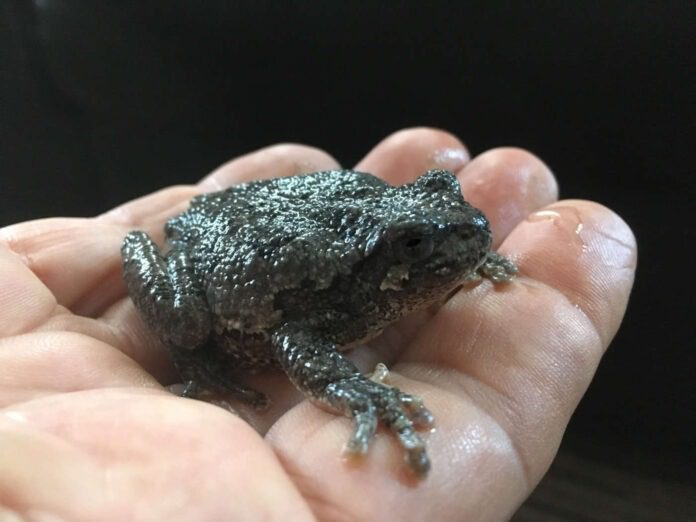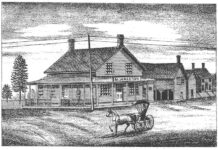Fred Schueler & Aleta Karstad
When we heard a Treefrog calling on 18 April 2012, we thought it was a manifestation of global warming, expressed by that extraordinarily early spring. But, after an ominously warm January & February of this year, Fred Schueler went out on the first of March to look for caterpillars in his standard Bishops Mills road ecology protocol – and found a big female Treefrog heading north on St-Lawrence Street.
We’ve recorded the dates we first found or heard Treefrogs in Grenville County since 1992, and it’s clear that, in line with the idea of global warming, spring is indeed coming earlier. If the previous years are divided into two 12-year series, in 1992-2003 we first found or heard Treefrogs 10 times in May, and twice in April, while from 2004-2016, there were 9 first dates in April, and 3 in May. This comparison doesn’t correct for when or how much we were away from home, but when evaluated by “Fisher’s Exact” test, the probability that the periods are the same is only 1%. This year’s frog is a full 6.5 weeks earlier than the previous earliest record, and the species had been heard calling in February in Oxford County in southwestern Ontario.
Hyla versicolor, the Tetraploid Gray Treefrog, is a large tree-dwelling frog which can change from grey to green coloration, with big sticky disks on the toes, and a white spot in front of the eye. It’s usually noticed when it’s seen clinging to vertical walls and windows. It calls with a braying honking trill, similar to the cries of baby Raccoons. There are loud choruses from breeding ponds in late spring, as well as sporadic calls from trees before the males go to the breeding ponds, and as they return to the trees after breeding. We also hear them calling sporadically through the summer, especially before rain. “Rain Frog” is a vernacular name, often used by those who don’t know the species by sight. Genetically, this species is a “tetraploid”, with twice the usual diploid number of chromosomes, compared with the very similar western and southern species Hyla chrysoscelis (which has a higher frequency call with faster trills at any temperature).
Treefrogs are one of four local species of frogs that survive the winter by hibernating on land, freezing solid, and reviving when they thaw. This freezing depends on releases of high levels of cryoprotectant (cold-protecting) chemicals into the blood. Their breeding season of the Tree Frog is a month or more after they emerge from hibernation. Freeze tolerance has only been studied at moderate temperatures below freezing, so we can’t know how out wanderer would have fared in the -17ºC of the next few days if we hadn’t taken her into our fridge.
The other freeze-tolerant frogs (Wood Frogs, Peepers, and Chorus Frogs) protect themselves from frost damage with super-diabetic levels of glucose, but the Treefrog’s cryoprotectant is glycerol (glycerine), which they’re able to secrete whenever there are low temperatures at least through the spring. Freeze tolerance has only been studied at moderate temperatures below freezing, so we can’t know how our wanderer would have fared in the -17ºC of the next few days if we hadn’t taken her into the sanctuary of our fridge.
Much of the research on freeze tolerance and its possible use in preserving human organs for transplant has been done by the lab of Ken & Janet Story at Carleton University – http://kenstoreylab.com/ – in large part using animals from Limerick Forest.








